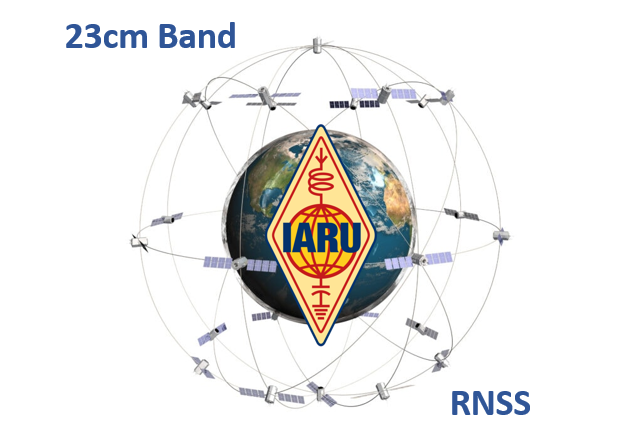01/12/2024
Eight new sunspot groups emerged over this reporting week, January
4-10.
Four new sunspot groups appeared on January 5, another two on
January 7 and two more on January 9.
Average daily sunspot numbers rose from 63.4 to 146.1, and average
daily solar flux went from 141.9 to 163.3.
Geomagnetic indicators declined, with planetary A index going from
6.7 to 4.9, and middle latitude numbers from 5.1 to 4.3.
Predicted solar flux over the near term is 192, 190 and 186 on
January 12-14, 188 on January 15-16, then 186 and 184 on January
17-18, 150 on January 19-21, then 145 and 140 on January 22-23, 135
on January 24-26, then 130 and 135 on January 27-28, 140 on January
29-31, then 150, 160, 165 and 150 on February 1-4, 155 on February
5-6, 160 on February 7, then 155 on February 8-10, then 160, 165,
160 and 155 on February 11-14, and 150 on February 15-17.
Predicted planetary A index is 5 on January 12, 8 on January 13-14,
5, 5, 10 and 8 on January 15-18, 5 on January 19-27, 8 on January
28-30, 5 on January 31 through February 3, then 10, 10 and 8 on
February 4-6, and 5 on February 7-22.
Weekly Commentary on the Sun, the Magnetosphere, and the Earth's
Ionosphere - January 11, 2024 from OK1HH:
"Since the beginning of the 25th Solar Cycle (December 2019), we
observed 782 sunspot groups, and almost half of them (361) last
year. Most forecasters believe that the solar maximum will occur in
2024.
"The exception is the Bureau of Meteorology Australian Space Weather
Forecasting Centre, whose 'OBSERVED AND PREDICTED SOLAR INDICES' table, published on January 4, already showed the probable highest SMOOTHED SUNSPOT NUMBER = 126.4 last November.
"It should fall further until R = 15.5 in December 2029. But I
believe solar activity will continue to rise and that we have a
second maximum ahead of us, no later than 2025.
"Now there is usually at least one active region on the Sun with an
unstable magnetic field 'beta-gamma,' capable of producing flares of
moderate magnitude, possibly with CMEs.
"Any large flares would be the exception, and proton flares would be
even more of an exception.
"Among the more significant moderate-magnitude eruptions accompanied
by CMEs is the M3.8/2n class event of 4 January at 0155 UTC, which
produced the Dellinger event (SWF or Shortwave Fadeout) over
Australia and the surrounding Pacific Ocean. There was silence at
frequencies below 20 MHz for more than 30 minutes. This flare took
place in the northeastern solar disk (N04E39), while the CME missed
the Earth.
"Other developments on the Sun were quieter, which contributed to a
relatively long interval of geomagnetic quiet since 4 January
onwards. At the same time, the intensity of solar radiation
increased. The result was progressively improving shortwave
propagation. But seven major active regions can now be counted on
the Sun's far side. Once they emerge onto the solar disk the
situation will change."
NASA's SDO reveals hidden solar storm threat to Earth:
https://bit.ly/3vxMJXU
Interesting application for use with Mobile Radio:
https://www.ve2dbe.com/
Send your tips, reports, observations, questions and comments to
This email address is being protected from spambots. You need JavaScript enabled to view it.. When reporting observations, don't forget to tell us
which mode you were operating.
For more information concerning shortwave radio propagation, see
http://www.arrl.org/propagation and the ARRL Technical Information
Service web page at, http://arrl.org/propagation-of-rf-signals . For
an explanation of numbers used in this bulletin, see
http://arrl.org/the-sun-the-earth-the-ionosphere .
An archive of past propagation bulletins is at
http://arrl.org/w1aw-bulletins-archive-propagation . More good
information and tutorials on propagation are at http://k9la.us/ .
Also, check this page:
https://bit.ly/3Rc8Njt
Instructions for starting or ending email distribution of ARRL
bulletins are at http://arrl.org/bulletins .
Sunspot numbers for January 4 through 10 2024 were 64, 121, 149,
171, 152, 183, and 183, with a mean of 146.1. 10.7 cm flux was
125.8, 152.7, 159.4, 167.1, 176.2, 175.9, and 186, with a mean of
163.3. Estimated planetary A indices were 6, 5, 3, 3, 4, 6, and 7,
with a mean of 4.9. Middle latitude A index was 5, 4, 2, 3, 4, 5,
and 7, with a mean of 4.3.


